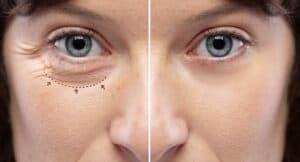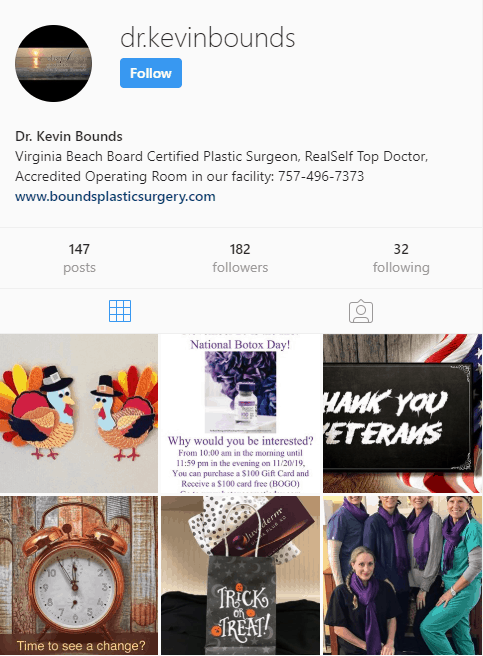The lower eyelids are frequently the first area of the face to reveal signs of aging. When we are young, pockets of fat cushion our eye orbits; over time, this fat protrudes outward and the lower eyelid skin stretches. What used to be a smooth, even transition between the lower eyelid and upper cheek develops peaks and valleys. Bulges that resemble bags or half-moons can develop beneath the lower eyelids.
Dr. Kevin Bounds regularly sees patients who have a chronically tired or sad expression due to these age- and gravity-related changes. As a board-certified plastic surgeon, Dr. Bounds is abundantly qualified to rejuvenate the lower eyelids and restore a youthful look.
How Is Lower Blepharoplasty Performed?
Lower blepharoplasty sculpts displaced fat and tightens loose skin of the lower eyelids. The goal is to eliminate bulges that obscure the transition between the lids and cheeks. Filling in the peaks and valleys also minimizes the appearance of any dark shadows beneath the lower lids cast by the bulges.
Lower blepharoplasty can be performed through incisions made beneath the lower lash line or placed on the inside of the lower eyelids. In both cases, scarring is well concealed.
If you are bothered by excess loose skin and/or puffiness around your lower eyelids, blepharoplasty with Dr. Bounds may be a good option. Known for his attention to detail and precise surgical techniques, Dr. Bounds works meticulously to avoid over- or under-correcting the eyes.
Dr. Bounds also ensures that surgery is a comfortable experience for every patient. It is natural to feel protective of your sensitive eyes and concerned about potential pain during surgery. Dr. Bounds will determine an appropriate pain management plan to reflect your unique needs and goals.
Local Anesthesia vs. General Anesthesia: Which Is Better?
Lower blepharoplasty can be performed with local anesthesia or general anesthesia.
With local anesthesia, many patients take a sedative medication prior to the procedure to achieve a relaxed, calm state of mind. The local anesthesia is administered directly underneath the eyelid skin using a tiny needle. Patients feel no pain or discomfort throughout the procedure, with the numbing effects usually lasting about an hour.
With general anesthesia, patients are asleep and completely unaware of the procedure. Dr. Bounds works with a board-certified anesthesiologist to administer the medication and monitor the patient throughout the procedure.
The anesthesia option that is right for you depends on factors such as your health, previous anesthesia experiences and personal preferences.
To learn more about lower blepharoplasty and the available anesthesia options, please contact our Virginia Beach plastic surgery practice today.













